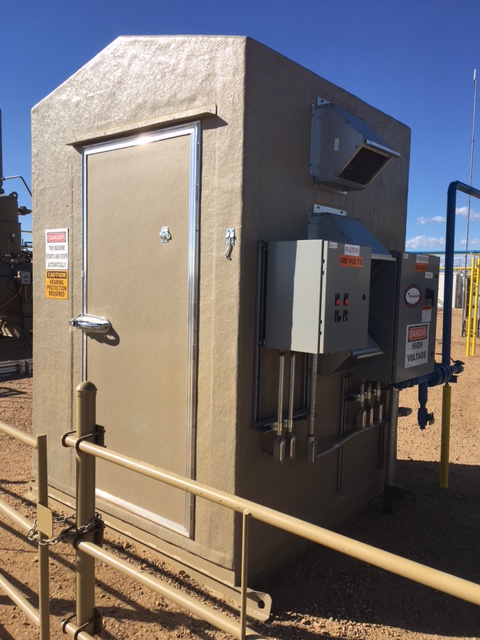Renewable Natural Gas is an emerging application among renewable energy options that include solar and wind. RNG is a method of recovering methane through anaerobic or thermochemical decomposition of waste products generated by landfills, waste treatment, or livestock. Once recovered and processed, RNG is utilized as an energy source. That fuel can be used for various applications, from powering a stove to firing a gas turbine or on-site genset to being delivered to a pipeline and blended with traditional natural gas.
By recapturing biogas, an organization like a dairy farm or municipality can prevent those emissions from contributing to global warming, air pollution, or other associated issues. This beneficial impact will potentially become an important piece of a renewable energy and environmentally-friendly strategy for dairies, feedlots, landfills, and waste treatment facilities — which are currently responsible for a large share of methane emissions.
RNG is similar to solar and wind in terms of carbon capture and carbon credit opportunities. Having the ability to earn tax credits for setting up RNG operations is another potential benefit for these sectors.
On the surface, biogas upgrading seems like a common-sense win-win: create a revenue stream by repurposing a greenhouse gas waste product into a renewable energy source.
At UEC, customers are starting to ask us about supporting biogas projects. However, in practice, it’s not quite that simple; biogas compression is not an off-the-shelf compression operation.
Biogas Treatment to Enable Recovery
Project developers must have a plan for upfront treatment that is crucial to any biogas RNG project. Biogas comes from different sources, and the materials that make up those sources aren’t homogenous. Therefore, there are usually treatment issues involved with upgrading that are different from those on a natural gas pipeline. When traditional natural gas production, (either associated or non-associated) is performed there are many constituents like ethane, propane and various hydrocarbon and non-hydrocarbon elements. When dealing with landfills that can have any number of chemical breakdown processes happening, biogas constituents can include siloxane, ammonia, or other caustic materials.
Therefore, sampling the gas before recovery is essential to determine the recoverable methane content and the percentages of any other byproducts at the site. For example, siloxane is a common sticky chemical byproduct with a tar-like consistency that ruins equipment. Because siloxane must be removed before you can use the gas, a biogas processing project will likely include partnering with specialized companies that do siloxane removal, oxygen removal and CO2 removal. When the end goal is high BTU gas, nitrogen removal is necessary.
Biogas Compression Sizing for a Typical Project
Biogas projects have several compressor applications throughout the process, to raise the suction pressure to the final discharge pressure requirements. While there’s not much flow involved, biogas suction pressures start from a relatively low pressure setting compared to traditional natural gas processing methods. A typical operation involves inlet compression to raise the pressure to the required pressures for siloxane and oxygen removal. If the project requires, the gas is then compressed again for carbon dioxide removal. Residue gas is then necessary to reach discharge pressures anywhere from 400PSIG to 1200PSIG.
Biogas Power and Permitting Issues to Consider
Two issues commonly arise when it comes to the location of a biogas processing project. One is the need for proximity to power sources to run compressors and other gas processing equipment. When a renewable energy operation is in an industrial area, accessing the electrical grid is possible. Power sources become more challenging in remote areas and should be factored in when developing a project.
Noise and odor pollution are other factors to consider when setting up a renewable energy project. Locating equipment on the farthest end of a landfill to minimize noise is one option. In Colorado, where cattle and dairy farming are significant enterprises, permitting issues can arise due to the smell generated by biogas processing.
At UEC, we’re keeping an eye on biogas as a renewable energy trend that’s gaining traction. Due to variations in biogas composition depending on the source, these projects are not an off-the-shelf solution. Therefore, we’re starting to see more biogas project requests from clients who want a boutique packaging provider to create unique custom biogas compression packaging systems for them.
Learn more about how UEC can create custom gas compressor and air compressor packaging solutions for your oil and gas and renewable energy projects.
Sources:
- Interview with UEC team
- Biogas basics – https://www.eia.gov/energyexplained/biomass/landfill-gas-and-biogas.php
- Biogas tax credits – http://biomassmagazine.com/articles/16745/two-biogas-tax-credits-to-drive-industry-growth




